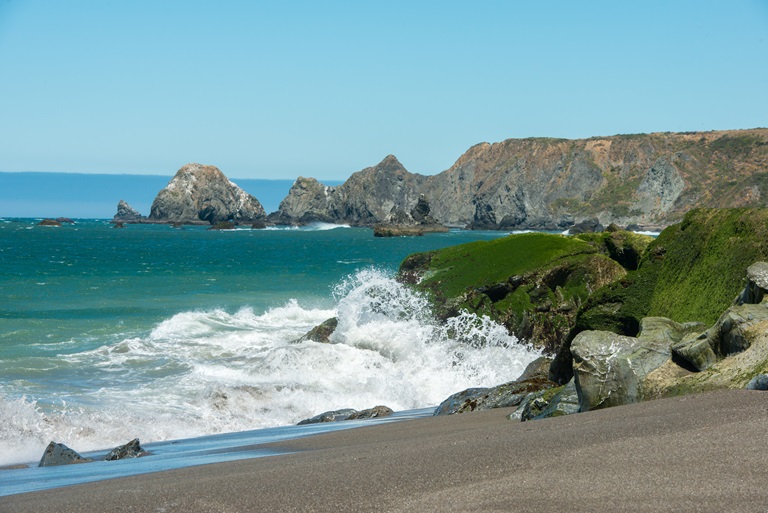Could Sea Level Rise Threaten the Water Coming Out of Some California Taps?
Photo of Goat Rock Beach along the Sonoma County shore.
Most Californians turn on their taps without thinking about where the water comes from or if that flow might trickle out someday. They may not realize how local, state, and even federal water managers work together to ensure a steady water supply now and in the future.
Flooding from earthquake-caused levee breaches or climate change-caused sea level rise could result in more saltwater invading our water supply that travels through the Delta. DWR’s climate scientists and water managers will address ways to plan for potential climate change impacts such as sea level rise at the Climate Change Vulnerability and Adaptation Summit in Sacramento on September 17, 2019.
Located east of the Bay Area, the Sacramento-San Joaquin Delta provides water used by two-thirds of California. Without the fresh water that flows from Central Valley rivers through this maze of channels, much of Silicon Valley, Santa Barbara, Los Angeles, and San Diego would have one-third to one-half the water they need.
At the western end of the Delta mother nature engages in a continuing clash rages over our fresh water supply. Saltwater from the Pacific Ocean fills San Francisco Bay, flowing north to San Pablo Bay, then east through the Carquinez Strait into Suisun Bay, pressing finally into the mouth of the Delta along the shores of Antioch. The primary barrier to the invading seawater is a constant flow of freshwater that starts high in the Sierra, then is released as needed from reservoirs upstream to push back the saltwater threatening to infiltrate the west end of the Delta.
Can the flow of river water continue keeping the saltwater out as sea levels rise? The sea level has already risen eight inches along the San Francisco coast and is expected to climb another 1 to 3.4 feet by the end of the century, according to the State of California’s Sea-Level Rise Guidance 2018 Update.
Local farmers and water agencies pull water from the Delta, as does DWR. The Department then distributes it southward through the California aqueduct and the rest of the State Water Project’s water delivery system. The federal government also pulls Delta water originating from the federal dams of Lake Shasta and Lake Folsom to send through its Central Valley Project.
Future sea level rise will significantly affect the hydrodynamics of the Delta, according to a report on climate change impacts to the State Water Project in California’s Fourth Climate Change Assessment. Sea level rise increases Delta salinity, requiring extra Delta outflow [to] dilute more brackish Delta water to meet environmental standards. The extra Delta outflow is provided at the expense of Delta exports, or water sent through the California Aqueduct to water suppliers and users south of the Delta.
The impacts of sea level rise, along with flooding and earthquakes, puts the water used by 27 million Californians at risk. DWR’s Climate Change Vulnerability and Adaptation Summit state brings water managers and stakeholders from across the state together to address the diverse portfolio of solutions to consider as they plan the future of the state’s water supply.
